Book Club Listings
JANUARY 29
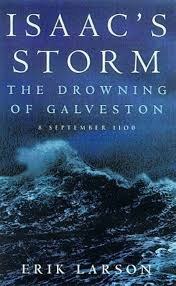
The Drowning of Galveston by Erik Larson
Galveston, Texas, 8 September 1900. It's another fine day in the Gulf according to Isaac Cline, chief observer of the new US Weather Bureau, but one day later, 6-10,000 people were dead, wiped out by the biggest storm the coast of America had ever witnessed. The storm blew up in Cuba. It was, in modern jargon, an X-storm -- an extreme hurricane -- and it did not circle around the Gulf of Mexico as storms routinely did. On 8 September 1900 it ploughed straight into Galveston. It was the meteorological equivalent of the Big One. It was to be the worst natural disaster ever to befall America to this day: between six and ten thousand people died, including Isaac Cline's wife and unborn child. With them died Cline's and America's hubris: the storm had simply blown them away. Told with a novelist's skill this is the true story of an awful and terrible natural catastrophe.
FEBRUARY 19
(Location to be determined)

The Bartender's Tale by Ivan Doig
Tom Harry has a streak of frost in his black pompadour and a venerable bar called The Medicine Lodge, the chief watering hole and last refuge in the town of Gros Ventre, in northern Montana. Tom also has a son named Rusty, an “accident between the sheets” whose mother deserted them both years ago. The pair make an odd kind of family, with the bar their true home, but they manage just fine.
Until the summer of 1960, that is, when Rusty turns twelve. Change arrives with gale force, in the person of Proxy, a taxi dancer Tom knew back when, and her beatnik daughter, Francine. Is Francine, as Proxy claims, the unsuspected legacy of her and Tom’s past? Without a doubt she is an unsettling gust of the future, upending every certainty in Rusty’s life and generating a mist of passion and pretense that seems to obscure everyone’s vision but his own. The Bartender’s Tale wonderfully captures how the world becomes bigger and the past becomes more complex in the last moments of childhood.
MARCH 19
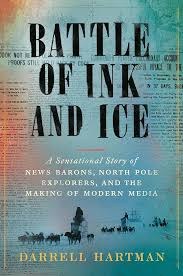
Battle of Ink and Ice by Darrell Hartman
In the fall of 1909, a pair of bitter contests captured the world’s attention. The American explorers Robert Peary and Frederick Cook both claimed to have discovered the North Pole, sparking a vicious feud that was unprecedented in international scientific and geographic circles. At the same time, the rivalry between two powerful New York City newspapers—the storied Herald and the ascendant Times—fanned the flames of the so-called polar controversy, as each paper financially and reputationally committed itself to an opposing explorer and fought desperately to defend him.
The Herald was owned and edited by James Gordon Bennett, Jr., an eccentric playboy whose nose for news was matched only by his appetite for debauchery and champagne. The Times was published by Adolph Ochs, son of Jewish immigrants, who’d improbably rescued the paper from extinction and turned it into an emerging powerhouse. The battle between Cook and Peary would have enormous consequences for both newspapers, and help to determine the future of corporate media.
APRIL 16
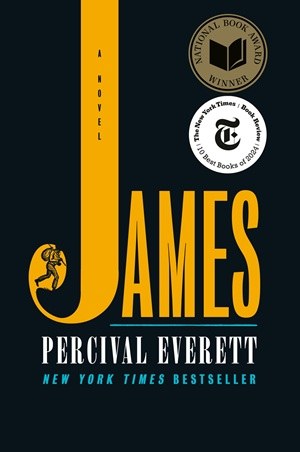
James by Percival Everett
When the enslaved Jim overhears that he is about to be sold to a man in New Orleans, separated from his wife and daughter forever, he decides to hide on nearby Jackson Island until he can formulate a plan. Meanwhile, Huck Finn has faked his own death to escape his violent father, recently returned to town. As all readers of American literature know, thus begins the dangerous and transcendent journey by raft down the Mississippi River toward the elusive and too-often-unreliable promise of the Free States and beyond. While many narrative set pieces of Adventures of Huckleberry Finn remain in place, Jim’s agency, intelligence and compassion are shown in a radically new light.
Brimming with the electrifying humor and lacerating observations that have made Everett a “literary icon” (Oprah Daily) and one of the most decorated writers of our lifetime, James is destined to be a cornerstone of twenty-first century American literature.
MAY 21
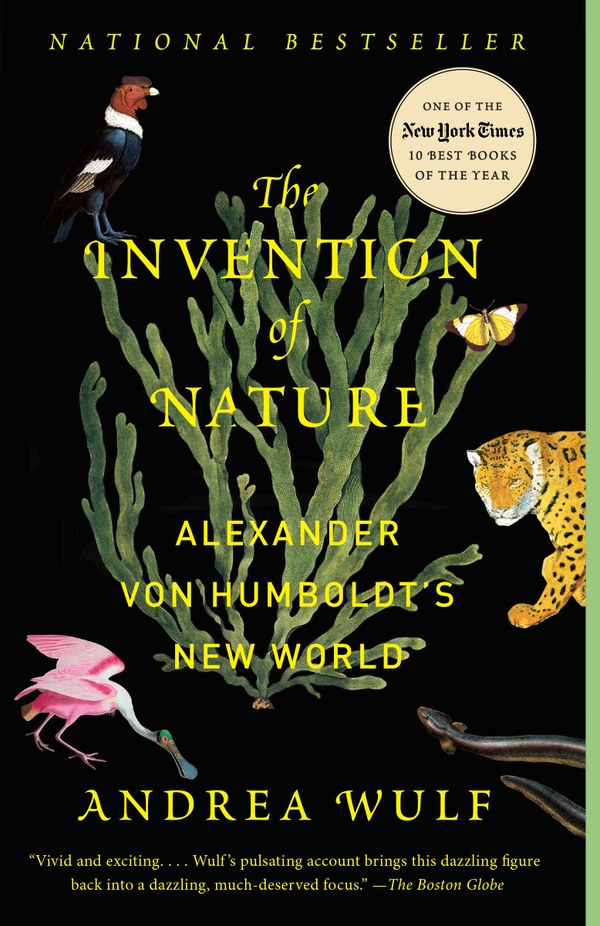
The Invention of Nature by Andrea Wulf
Alexander von Humboldt (1769-1859) was the most famous scientist of his age, a visionary German naturalist and polymath whose discoveries forever changed the way we understand the natural world. Among his most revolutionary ideas was a radical conception of nature as a complex and interconnected global force that does not exist for the use of humankind alone. In North America, Humboldt’s name still graces towns, counties, parks, bays, lakes, mountains, and a river. And yet the man has been all but forgotten. In this illuminating biography, Andrea Wulf brings Humboldt’s extraordinary life back into focus: his prediction of human-induced climate change; his daring expeditions to the highest peaks of South America and to the anthrax-infected steppes of Siberia; his relationships with iconic figures, including Simón Bolívar and Thomas Jefferson; and the lasting influence of his writings on Darwin, Wordsworth, Goethe, Muir, Thoreau, and many others. Brilliantly researched and stunningly written, The Invention of Nature reveals the myriad ways in which Humboldt’s ideas form the foundation of modern environmentalism—and reminds us why they are as prescient and vital as ever.
JUNE 18
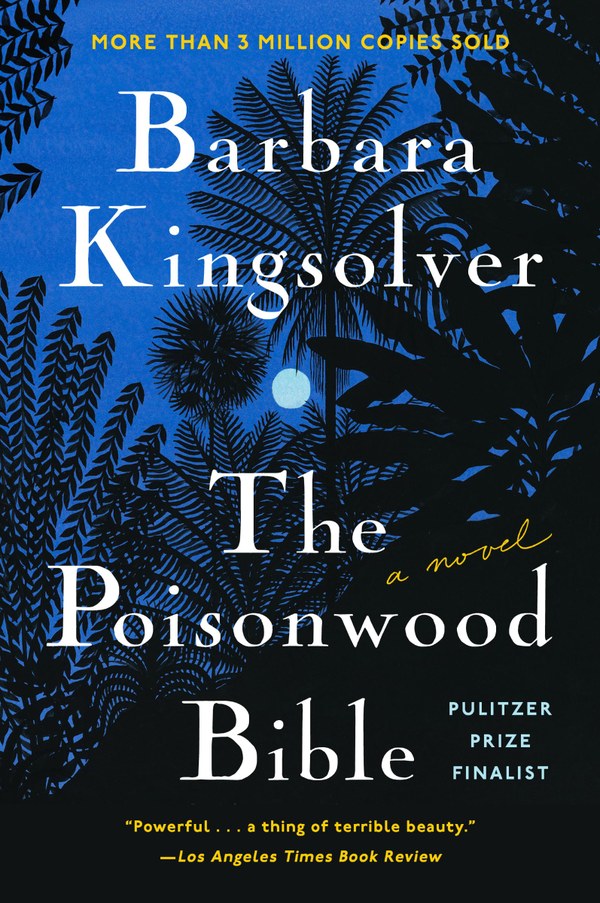
The Poisonwood Bible by Barbara Kingsolver
The Poisonwood Bible is a story told by the wife and four daughters of Nathan Price, a fierce evangelical Baptist who takes his family and mission to the Belgian Congo in 1959. They carry with them all they believe they will need from home, but soon find that all of it―from garden seeds to Scripture―is calamitously transformed on African soil. This tale of one family's tragic undoing and remarkable reconstruction, over the course of three decades in postcolonial Africa, is set against history's most dramatic political parables. The Poisonwood Bible dances between the darkly comic human failings and inspiring poetic justices of our times. In a compelling exploration of religion, conscience, imperialist arrogance, and the many paths to redemption, Barbara Kingsolver has brought forth her most ambitious work ever.
SEPTEMBER 17
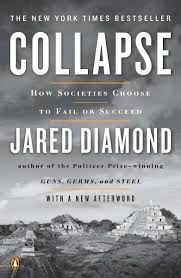
Collapse: How Societies Fail or Succeed by Jared Diamond
In this follow-up to Guns, Germs and Steel, the author explores how climate change, the population explosion, and political discord create the conditions for the collapse of civilization. Environmental damage, climate change, globalization, rapid population growth, and unwise political choices were all factors in the demise of societies around the world, but some found solutions and persisted. Diamond traces the fundamental pattern of catastrophe and weaves an all-encompassing global thesis through a series of fascinating historical-cultural narratives. Collapse moves from the Polynesian cultures on Easter Island to the flourishing American civilizations of the Anasazi and the Maya and finally to the doomed Viking colony on Greenland. Similar problems face us today and have already brought disaster to Rwanda and Haiti, even as China and Australia are trying to cope in innovative ways. Despite our own society’s apparently inexhaustible wealth and unrivaled political power, ominous warning signs have begun to emerge even in ecologically robust areas like Montana. Brilliant, illuminating, and immensely absorbing, Collapse is destined to take its place as one of the essential books of our time, raising the urgent question: How can our world best avoid committing ecological suicide?
OCTOBER 15
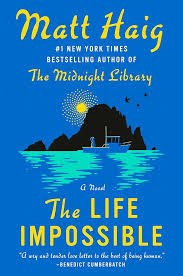
The Life Impossible by Matt Haig
When retired math teacher Grace Winters is left a run-down house on a Mediterranean island by a long-lost friend, curiosity gets the better of her. She arrives in Ibiza with a one-way ticket, no guidebook and no plan. Among the rugged hills and golden beaches of the island, Grace searches for answers about her friend’s life and how it ended. What she uncovers is stranger than she could have dreamed. But to dive into this impossible truth, Grace must first come to terms with her past. Filled with wonder and wild adventure, this is a story of hope and the life-changing power of a new beginning.
NOVEMBER 19
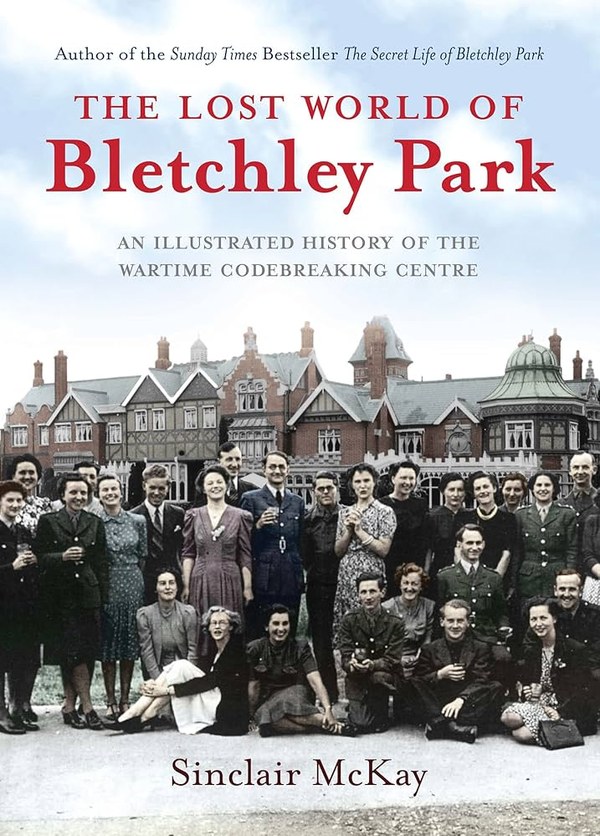
The Lost World of Bletchley Park by Sinclair McKay
Bletchley Park has played a vital role in British history. This Victorian country house in the Buckinghamshire countryside was where one of the war’s most famous and crucial achievements was made: the cracking of Germany’ s 'Enigma' code in which its most important military communications were couched. It was home to some of Britain’s most brilliant mathematical brains, such as Alan Turing, and the scene of immense advances in technology. The military codes deciphered there were instrumental in turning both the Battle of the Atlantic and the war in North Africa. Though plenty has been written about the researchers and the codebreaking, what of the thousands of men and women who lived and worked there during the war? What was life like for them, an odd, secret territory between the civilian and the military? This is the first oral history of life at Bletchley Park, a compendium of memories from people now in their eighties and of the implacable secrecy that meant girlfriend and boyfriend working in adjacent huts knew nothing about each other's work.
DECEMBER 17
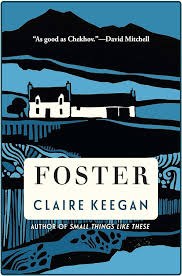
Foster by Claire Keegan
Claire Keegan's piercing contemporary classic is a heartbreaking story of childhood, loss, and love, now released in the U.S. as a standalone book. It is a hot summer in rural Ireland. A child is taken by her father to live with relatives on a farm, not knowing when or if she will be brought home again. In the Kinsella’s house, she finds an affection and warmth she has not known and slowly, in their care, begins to blossom. The narrator is a young girl sent by her parents to live with the Kinsella family while her mother, Mary, carries to term another child in a household already bustling with siblings. The Kinsellas, John and Edna, have no children of their own and will foster the girl on their small farm in Wexford. But there is something unspoken in this new household where everything is so well tended. In a story of astonishing emotional depth, Foster showcases Claire Keegan's great talent and secures her reputation as one of our most important storytellers.
